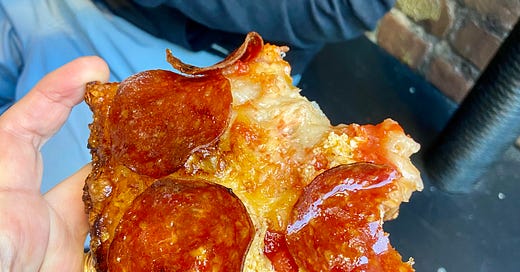Greetings eaters and readers! Hope you all enjoyed your weekends. We biked down to the West Village for lunch on Saturday, destination: L’Industrie, the Brooklyn-headquartered pizzeria that everyone has told me is not just TikTok hype. Well, I’ll have to let you know if I agree another time — I expected a line on a warm spring Saturday (plus the West Vi…
© 2025 Jenny Rosenstrach
Substack is the home for great culture





